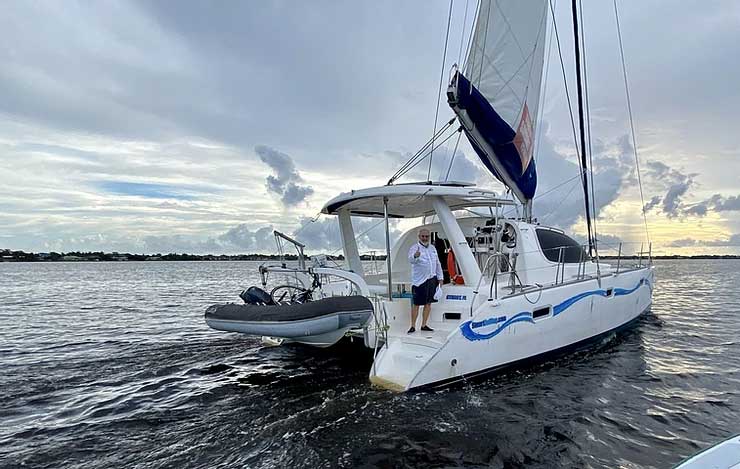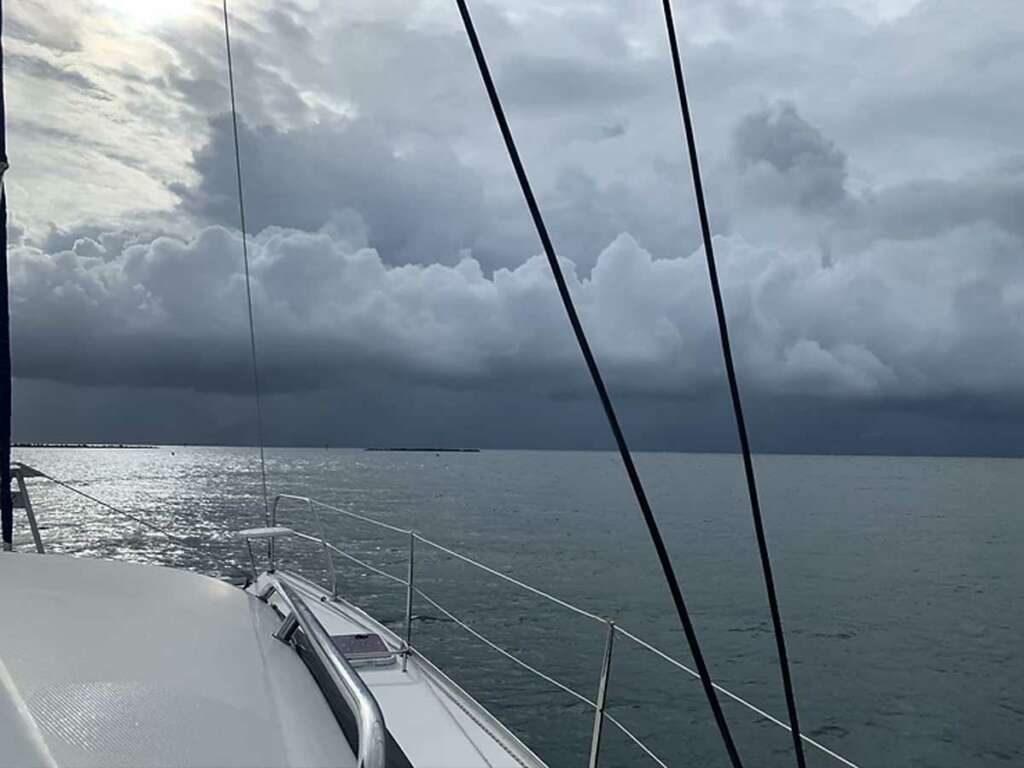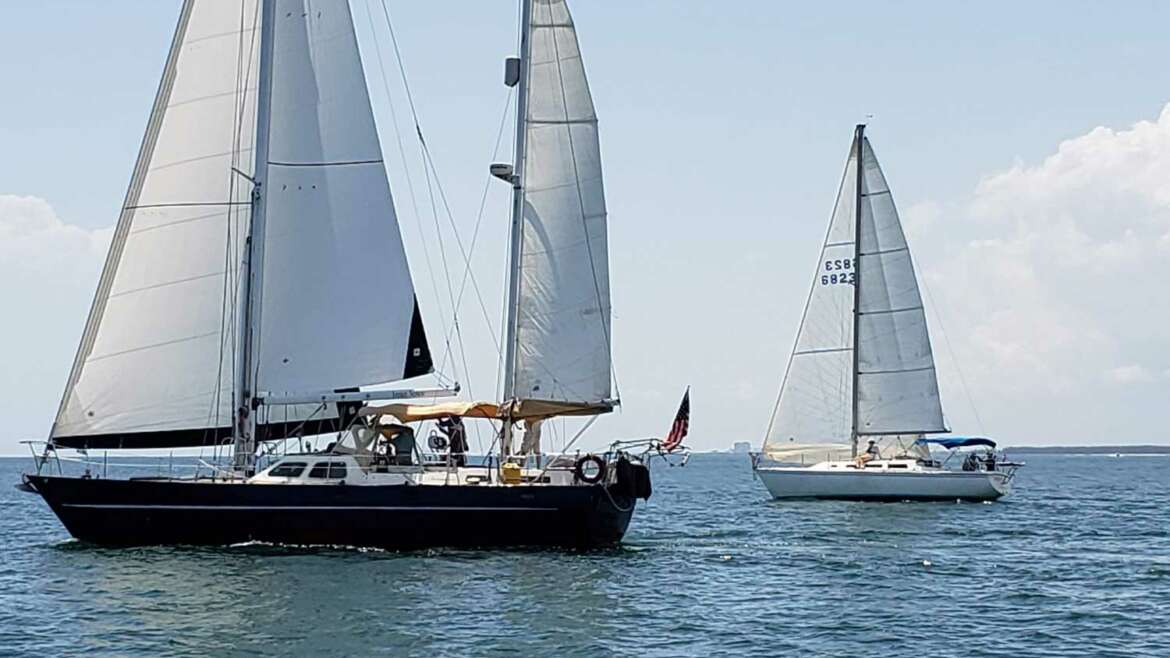I’ve been fascinated by sailing alone on the ocean since I was a little boy. Once I got out of school and bought my first sailboat, I read every book I could get my hands on by and about people who sail single handed. Although I have never done an overnight passage without crew, I have done countless sails alone over the last 40 years on lakes, rivers, and oceans and am quite comfortable handing our 40’ catamaran by myself.
With COVID-19 making close contact a concern, I decided to do an eighteen-mile ocean race today by myself. I left the dock and motor sailed down the river an hour and a half to the inlet.
I had been keeping an eye on a moderately large squall a few miles away heading towards me with a cloud as black as the inside of a cow and occasional flashes of lightning. The wind was finally piping up to the forecast 10 to 15 with gusts to 20+ and waves a moderate 2 to 4 feet. The weather radio warned of gusts up to 40.
In those conditions, one wants to reduce the amount of sail up or take it down completely. Both maneuvers required me to leave the helm and go up on deck. This should not be attempted in these conditions without someone to steer the boat and pick you up if you fall overboard. Falling off a boat at sea is dangerous even with crew.
A key skill needed to successfully sail is to learn to manage the angle of the wind relatively to the centerline of the boat.
As soon as I got out into the ocean a cotter pin let go leaving me no way to control the large mainsail and the 15-foot aluminum boom. If I gybed the boat, (let the stern swing through the eye of the wind) the boom might swing uncontrollably breaking a stay holding the 55 mast up.
Once I turned back to the river, I had to motor sail in a narrow channel with the wind directly behind me back and forth making steering more challenging.


I finally made it to the river but still had the wind and sail to contend with. I either had to gybe risking damage or do a 270-degree tack. I chose the latter. Before long I found a spot near shore sheltered somewhat from the wind and with no waves. I turned the boat into the wind and carefully went up on deck to lower the mainsail. The autopilot does a poor job of steering the boat at slow speed and I had to return to the helm a couple of time to reset my course before
I finally got the sail down. Next, I tied the end of boom to the grab rail on the coach roof and was able to relax and not worry about destroying my rig.
By then I could see that the other race boats were returning to their docks indicating the race was cancelled. I didn’t know for sure if the parts I needed to fix the problem were on board so I decided to motor sail back to the marina where I could rectify the issue while the boat was securely tied to the dock. Besides, I didn’t want to hang on the edge of the coach roof 10 feet above the deck while the boat wakes were causing my craft to roll possibly knocking me off.
Single handed sailing requires experience, preparation, and skill. Always move slowly and carefully, planning each maneuver before taking any risky action. I still love it though.
If there’s one thing in my life that’s missing It’s the time that I spend alone Sailing on the cool and bright clear water….
It’s kind of a special feeling When you’re out on the sea alone Staring at the full moon like a lover…
Cool Change, Little River Band



